The national flag of Eritrea is a powerful and evocative emblem, meticulously designed to encapsulate the nation's arduous journey to independence, its enduring spirit, and its aspirations for peace and prosperity. Officially adopted on December 5, 1995, this flag is a vibrant tapestry woven from the sacrifices of a thirty-year struggle and the hopes for a bright future. It stands as a testament to the resilience of the Eritrean people and their deep connection to their land and sea. This comprehensive guide will explore the flag's distinctive design, the profound symbolism of its colors and central emblem, its rich historical evolution, its geographical context, and its immense significance for all Eritreans.
Design and Dimensions
The flag of Eritrea features a unique and dynamic design that immediately captures attention. It is dominated by a large red isosceles triangle whose base rests on the hoist (left) side of the flag and whose apex extends to the fly (right) side, essentially dividing the flag into three distinct sections. This prominent red triangle is flanked by two other triangles: a green triangle at the top and a blue triangle at the bottom.
The precise angles and arrangement of these elements are deliberate, each contributing to the flag's overall narrative and symbolic depth.
Symbolism of the Colors and Elements
Every color and element on the Eritrean flag is imbued with significant meaning, reflecting the country's history, its natural characteristics, and the values of its people.
-
Red Triangle: This dominant feature is a powerful and solemn reminder of the sacrifices made and the blood shed by the Eritrean people during their arduous thirty-year war for independence against Ethiopia (1961-1991). The triangular shape itself, pointing forward, symbolizes the nation's progress and determination to move towards a brighter future, leaving behind the struggles of the past but never forgetting them.
-
Green Triangle: Positioned at the top, the green triangle represents the fertility of Eritrea's land, its agriculture, and its natural wealth. It signifies the hope for agricultural prosperity and the vital role that farming plays in the lives of many Eritreans. It also embodies the vibrant life and potential of the nation.
-
Blue Triangle: Located at the bottom, the blue triangle symbolizes the wealth and importance of the Red Sea, which forms Eritrea's extensive eastern coastline. It also represents the hope for peace and the peaceful future that the Eritrean people aspire to achieve after decades of conflict. The vastness of the sea also hints at Eritrea's global connections and its future maritime potential.
-
Yellow Olive Wreath and Branch: This emblem, positioned on the red triangle, is perhaps the most historically resonant element.
-
Yellow Color: The golden yellow color of the emblem signifies the abundance and richness of Eritrea's mineral resources and its potential for prosperity. It also represents the bright future that the nation is building.
-
Olive Wreath: The olive wreath itself is a powerful and universal symbol of peace. Its inclusion directly links the current flag to Eritrea's first flag, used during the UN-sanctioned federation with Ethiopia (1952-1962). This continuity highlights Eritrea's consistent aspiration for peace, even amidst conflict.
-
28 Leaves: The most poignant detail of the emblem is the number of leaves – 14 on each side, totaling 28. Each leaf is said to represent a year of the armed struggle for liberation (1961 to 1991). This precise count serves as a constant, silent memorial to the immense cost of freedom and the unyielding determination of those who fought for it.
Together, these symbols tell a compelling story of struggle, sacrifice, enduring hope, and a deep connection to the land and sea, all culminating in the vision of a peaceful and prosperous Eritrea.
History of Creation and Adoption
The history of the Eritrean flag is intricately tied to the nation's tumultuous path to independence and its various political phases.
-
Federal Flag (1952-1962): Following a UN resolution, Eritrea was federated with Ethiopia in 1952. During this period, Eritrea adopted its first distinct flag. This flag was light blue with a green olive wreath in the center. The blue symbolized the United Nations, which facilitated the federation, and the olive wreath represented peace. This flag was a significant marker of Eritrean identity within the federal arrangement.
-
Annexation and Loss of Flag (1962-1991): In 1962, Ethiopia unilaterally annexed Eritrea, dissolving the federation and banning the Eritrean flag. The Ethiopian flag became the sole national flag, marking the beginning of the brutal thirty-year Eritrean War of Independence. During this period, various liberation fronts used their own distinctive flags, with the Eritrean People's Liberation Front (EPLF) eventually becoming the dominant force. The EPLF's flag already featured the basic green, red, and blue triangular design, representing their aspirations and the land/sea.
-
Interim Period (1991-1993): After Eritrea gained de facto independence in 1991 (following the defeat of the Ethiopian regime by the EPLF), a provisional government was established. During this interim period leading up to the 1993 referendum on independence, a flag similar to the current one, but perhaps with a simpler or different emblem, was used.
-
Referendum and Formal Independence (1993): A UN-monitored referendum in April 1993 overwhelmingly voted for independence. On May 24, 1993, Eritrea officially became an independent state.
-
Adoption of Current Flag (December 5, 1995): The current national flag was officially adopted on December 5, 1995, following a process of national consultation and parliamentary approval. The design ingeniously merged elements from the EPLF's wartime flag (the green, red, and blue triangular layout) with the historical olive wreath from the 1952 federal flag. The addition of the 28 leaves to the wreath was a poignant tribute to the duration of the liberation struggle, ensuring that the memory of sacrifice remained central to the national symbol.
This historical journey of the flag reflects Eritrea's unwavering determination to achieve and preserve its self-determination.
Country, Region, and Acceptance
Eritrea is a sovereign nation situated in the Horn of Africa (Northeast Africa), strategically positioned along the southwestern coast of the Red Sea. It shares borders with Sudan to the west, Ethiopia to the south, and Djibouti to the southeast. Its extensive coastline and numerous islands in the Red Sea give it significant geopolitical importance.
The Eritrean flag is the official national emblem of the State of Eritrea. It is universally accepted by the government, all branches of the armed forces, its diverse population, and the international community. It is proudly displayed at government buildings, schools, public institutions, and by private citizens throughout the country and in the Eritrean diaspora. Despite internal political dynamics, the flag remains a unifying symbol of national identity and the hard-won sovereignty that all Eritreans cherish.
Significance for the Inhabitants
For the people of Eritrea, the national flag carries immense and profound significance, embodying their collective identity, history, and aspirations:
-
Symbol of Hard-Won Independence: Above all, the flag is a powerful testament to Eritrea's hard-won independence achieved after an exceptionally long and devastating thirty-year war. It serves as a constant reminder of the immense sacrifices, resilience, and unwavering determination of a generation that fought for freedom. Every Eritrean understands the weight of this struggle represented by the red triangle.
-
National Unity: Eritrea is a nation with nine recognized ethnic groups and multiple languages. The flag, through its balanced design and shared symbolism, fosters a strong sense of national unity that transcends ethnic and religious differences. It reminds all citizens that they are part of one nation, united by a common history and shared future.
-
Memory of Martyrs: The red triangle and the 28 leaves on the olive wreath serve as a solemn memorial to the countless martyrs who lost their lives in the struggle for liberation. For Eritreans, the flag is not merely a political symbol but a deeply personal one, evoking the memory of family members, friends, and comrades who sacrificed everything for the nation's freedom.
-
Peace and Prosperity: The green and blue triangles, combined with the olive wreath, symbolize the aspirations for peace, stability, and prosperity that guide the nation's development. After decades of conflict, the flag represents the commitment to building a peaceful and self-sufficient country where future generations can thrive.
-
Identity and Pride: The flag is a source of immense national pride for Eritreans, both within the country and in the vast diaspora. It distinguishes their unique history and identity from their neighbors and celebrates their achievement of self-determination. Waving the flag is an act of deep patriotism and a declaration of their unique place in the world.
-
Connection to Land and Sea: The green and blue elements vividly represent the Eritrean landscape – its fertile plains and agricultural potential, and its vital connection to the Red Sea, which is central to its economy and culture.
Interesting Facts
-
Longest African Liberation War: Eritrea's war for independence against Ethiopia lasted for 30 years (1961-1991), making it one of the longest and most devastating liberation struggles in modern African history. The flag's design directly reflects this immense struggle.
-
"Museum of Modernist Architecture": The capital city, Asmara, is a UNESCO World Heritage site renowned for its remarkably preserved Italian modernist and Art Deco architecture from the colonial era. It's often called "Africa's Secret Modernist City."
-
Only African Country to Successfully Secede: Eritrea is one of the very few African countries to have successfully seceded from another nation (Ethiopia) and gained full international recognition.
-
Strategic Red Sea Coastline: Eritrea boasts over 1,150 km of coastline along the Red Sea, plus more than 350 islands in the Dahlak Archipelago. This strategic location has historically made it a crossroads of trade and culture.
-
Unique Railway System: Eritrea has a unique and picturesque narrow-gauge railway system built by the Italians, which is still partially operational, including steam locomotives. It's a rare surviving example of colonial-era engineering.
-
Nine Ethnic Groups: Eritrea is home to nine officially recognized ethnic groups: Tigrinya, Tigre, Afar, Beja, Bilen, Hedareb, Kunama, Nara, and Rashaida, each with its own language and cultural traditions. This diversity is united under the national flag.
-
Birthplace of "The Mother of All Languages"?: Some theories suggest that the ancient language Ge'ez, still used in the Eritrean Orthodox Tewahedo Church, might be one of the earliest Semitic languages, with ancient roots.
-
High Altitude and Diverse Climate Zones: Despite its proximity to the desert, Eritrea has diverse climate zones, ranging from hot coastal deserts to cool highlands due to its varied topography. Asmara, for example, is over 2,300 meters above sea level.
-
Ancient History and Archeological Sites: Eritrea has a rich ancient history with numerous archaeological sites, including the ruins of Qohaito and Adulis, which were important ancient cities and trading hubs.
In the demonstration images, full-size flags are shown with proportions of 2:3, and hand-held flags with proportions of 1:2.
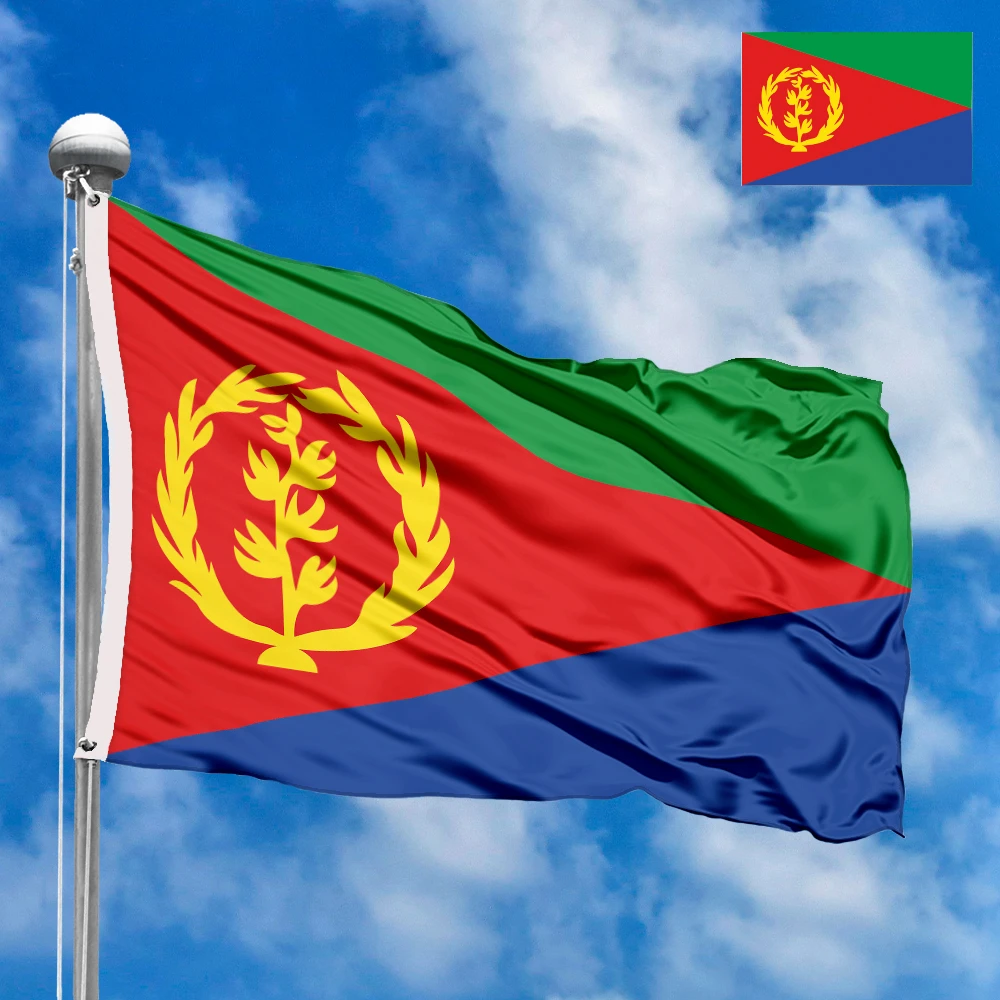

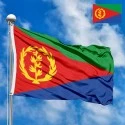
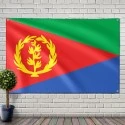
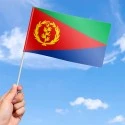


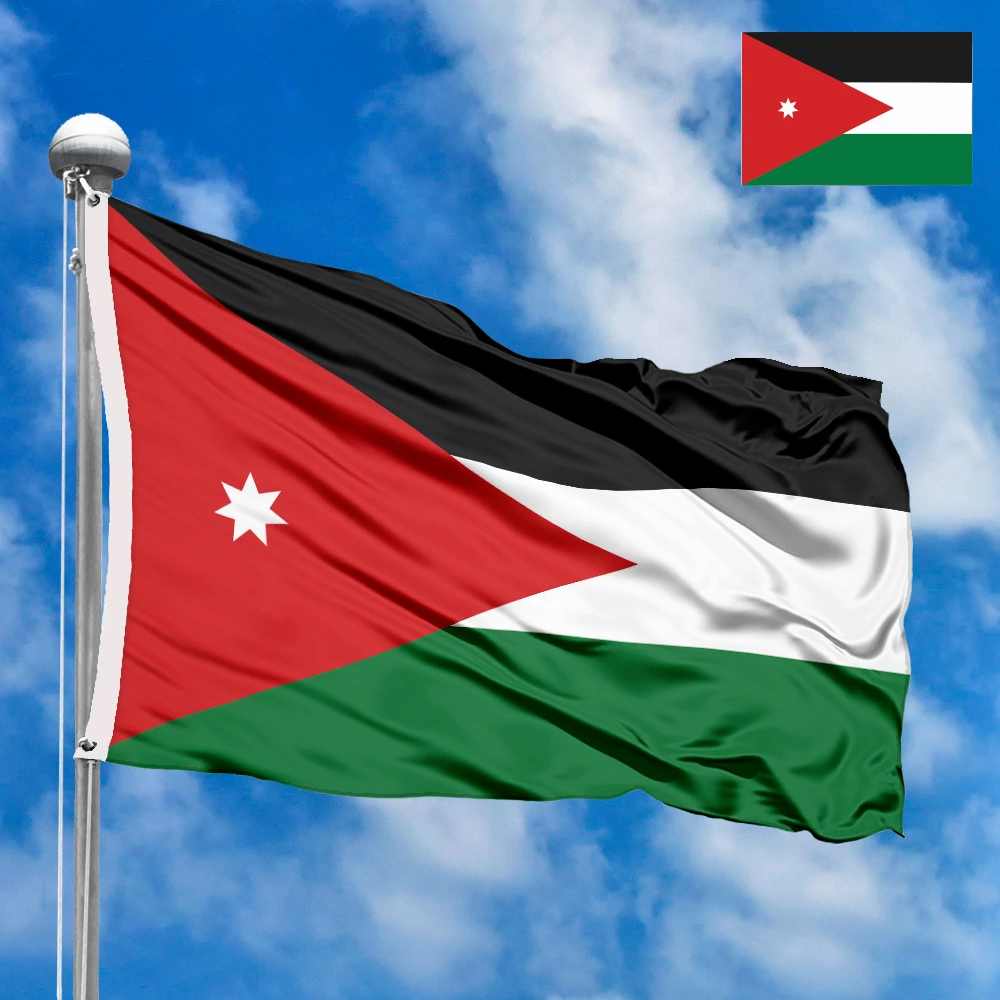

 Waving flag
Waving flag
 Sizes:
Sizes:
 Round flag
Round flag
 Sizes:
Sizes:
 Rectangular flag 2:3
Rectangular flag 2:3
 Sizes:
Sizes: